|
Thread Number: 8706
A Rareity, A GE in Australia |
[Down to Last] |

|
Post# 163576 , Reply# 1 10/29/2006 at 05:16 (6,381 days old) by brisnat81  (Brisbane Australia) (Brisbane Australia) |
||
|
Lid Up Only 1 little rust spot in the middle on top. 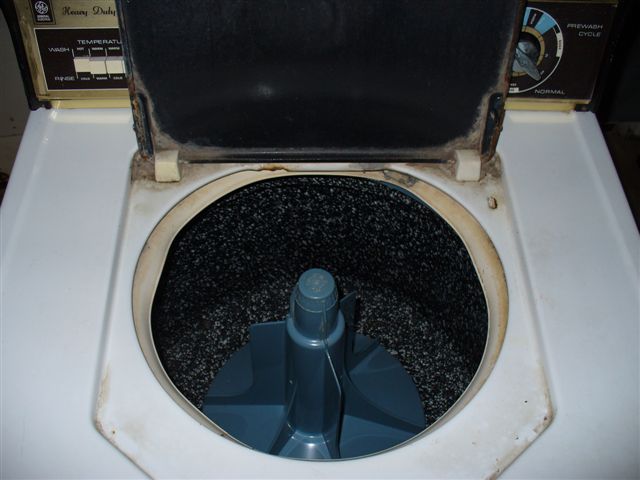
| ||
Post# 163577 , Reply# 2 10/29/2006 at 05:17 (6,381 days old) by brisnat81  (Brisbane Australia) (Brisbane Australia) |
||
|
Temps and Speeds The model number I think was 754MG, (This is on the control panel) The model tag on the front left corner is pretty faded, so I'll need to wait for natural light to read it better. 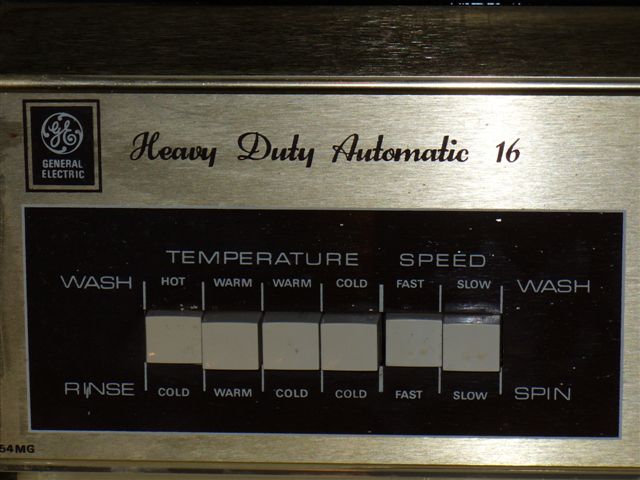
| ||
Post# 163578 , Reply# 3 10/29/2006 at 05:18 (6,381 days old) by brisnat81  (Brisbane Australia) (Brisbane Australia) |
||
Cycle Options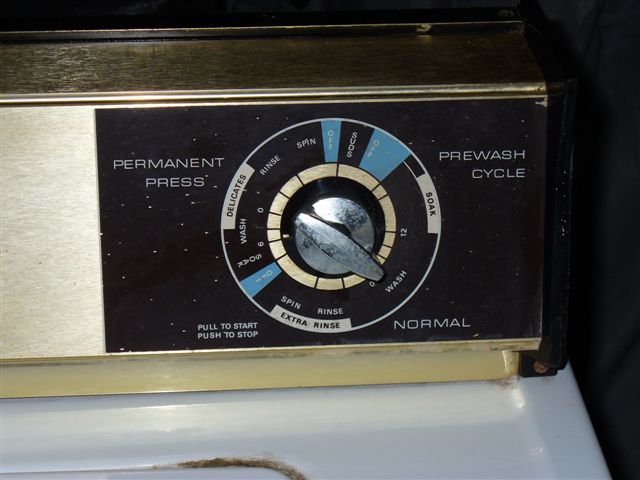
| ||
Post# 163579 , Reply# 4 10/29/2006 at 05:19 (6,381 days old) by brisnat81  (Brisbane Australia) (Brisbane Australia) |
||
|
Tiny Opening I was amazed by how small the opening is. The filterflow pan when fitted fills up the entire opening, likewise with the minibasket. Does the 16 designate the capacity or the model series? 
| ||
Post# 163594 , Reply# 5 10/29/2006 at 05:42 (6,381 days old) by bajaespuma  (Connecticut) (Connecticut) |
||
Thank you so much.
The 16 designated the claimed capacity of "heavy mixed fabrics". In truth the US GE 16's were the same sized tubs as their V-12's introduced in 1961. The tub opening looks standard for that generation of GE's. Thank you so much for posting this. Can we get a pic of the filter pan? I'm curious. Also, is their a mini-basket?? I'd love to know how these antipodean GE's were manufactured. The buttons and the control knob are from their US 1961-1964 model lines. The control panel is something I haven't seen before. The lid, top, lid hinges, filter-flo flume, washbasket rim, rim guard and washbasket look identical to the last filter-flo's here. The activator looks like a Sears/Whirlpool column and agitator cap with a GE straight-vane sixteen grafted on to it. This is why I'm curious to see the filter pan. | ||
Post# 163600 , Reply# 6 10/29/2006 at 05:54 (6,381 days old) by brisnat81  (Brisbane Australia) (Brisbane Australia) |
||
|
Filter Flo Top Sorry about the dirt, it was found 4 hours ago, and I havent had a chance to clean it up yet. 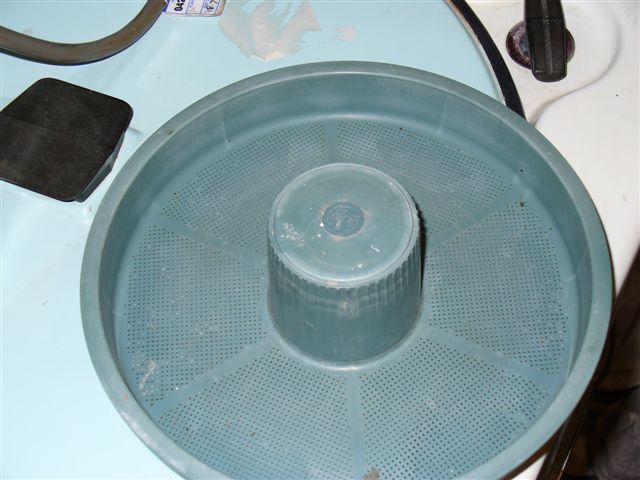
| ||
Post# 163601 , Reply# 7 10/29/2006 at 05:55 (6,381 days old) by brisnat81  (Brisbane Australia) (Brisbane Australia) |
||
|
Filter Flo Bottom We had the later 80's and 90's styled machines the same as were in the US. Before that we had the Machines with the toggle switches and the Yellow/Brown/Red woodgrain controls. Thats what makes me think that these are earlier. 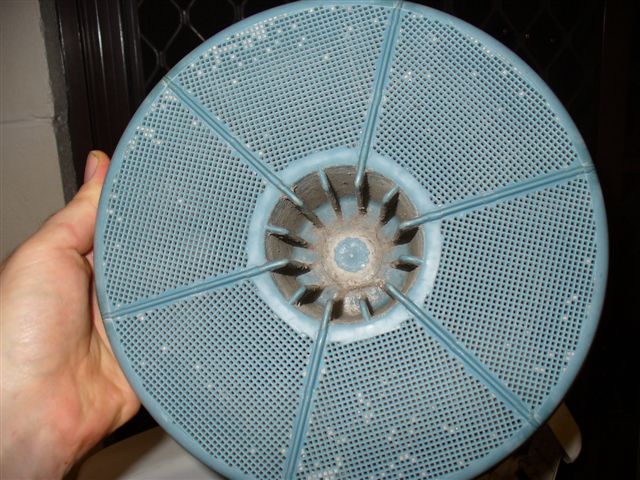
| ||
Post# 163602 , Reply# 8 10/29/2006 at 05:56 (6,381 days old) by brisnat81  (Brisbane Australia) (Brisbane Australia) |
||
|
MiniBasket Top Mind the dirt. 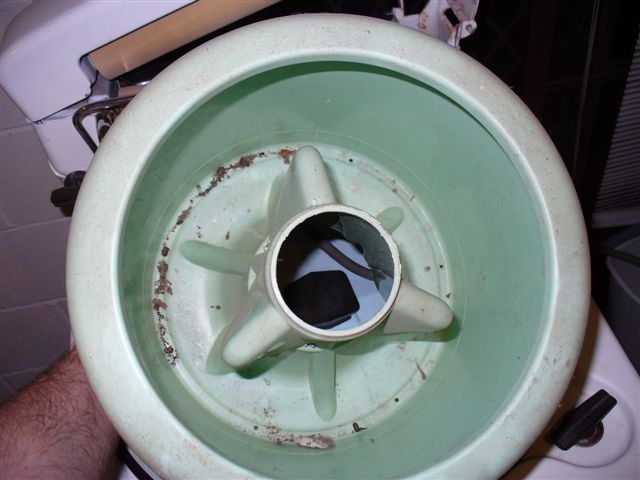
| ||
Post# 163603 , Reply# 9 10/29/2006 at 05:57 (6,381 days old) by brisnat81  (Brisbane Australia) (Brisbane Australia) |
||
Minibasket Side on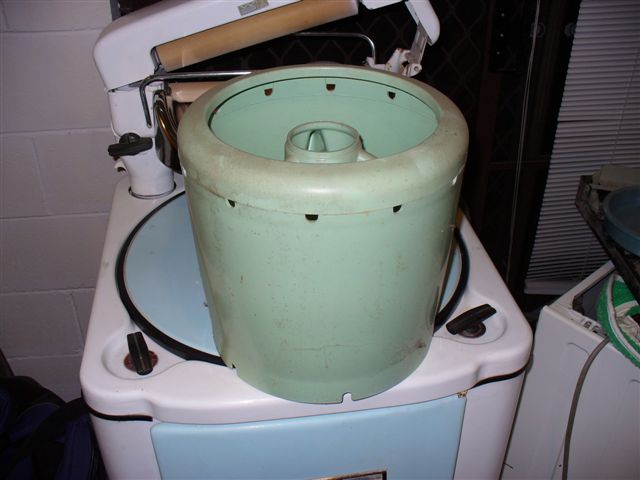
| ||
Post# 163617 , Reply# 12 10/29/2006 at 08:28 (6,381 days old) by gansky1  (Omaha, The Home of the TV Dinner!) (Omaha, The Home of the TV Dinner!) |
||
 | ||
Post# 163621 , Reply# 13 10/29/2006 at 08:40 (6,381 days old) by gizmo  (Victoria, Australia) (Victoria, Australia) |
||
|
Thanks for your explanation, nasadowsk. Now, over 20 years later, it all makes sense... chris. | ||
Post# 163672 , Reply# 14 10/29/2006 at 14:18 (6,381 days old) by brisnat81  (Brisbane Australia) (Brisbane Australia) |
||
|
Choice claims it was an import Hi Chris, Do you know how old the machine is, based on your families ownership? I've got all of the choice magazines between 1960 and 1981 and I was pretty sure that it states the GE's were imported. I will go back and check however. Nathan | ||
Post# 163691 , Reply# 15 10/29/2006 at 16:55 (6,381 days old) by petek  (Ontari ari ari O ) (Ontari ari ari O ) |
||
 | ||
Post# 163694 , Reply# 16 10/29/2006 at 17:07 (6,381 days old) by unimatic1140  (Minneapolis) (Minneapolis) |
||
WOW Nathan! | ||

 Comes to the Rescue!
Comes to the Rescue!